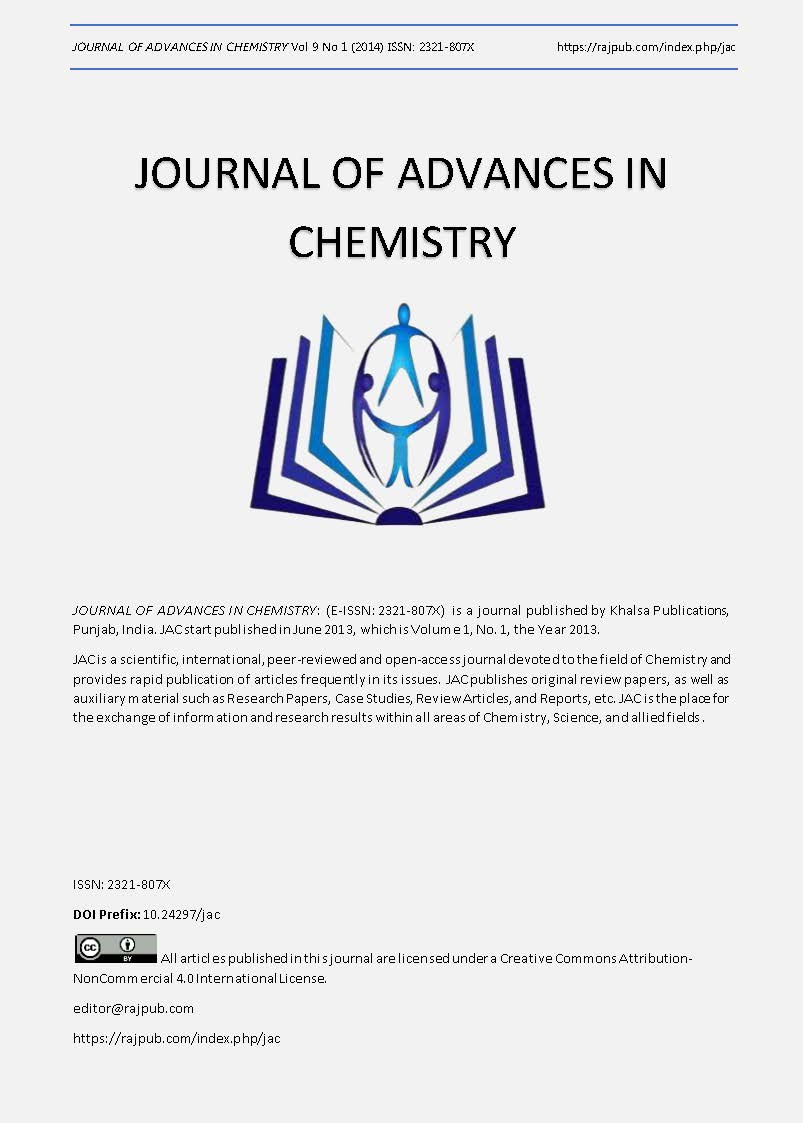Comparison of Adsorptive Removal of Total Nitrogen (T-N) and Total Phosphorous (T-P) in Aqueous Solution using Granular Activated Charcoal (GAC)
DOI:
https://doi.org/10.24297/jac.v9i1.2306Keywords:
T-P, T-N, Granular activated charcoal, Adsorption, IsothermAbstract
The present study is to explore the possibility of utilizing granular activated charcoal (GAC) for the removal of total phosphorous (T-P) and total nitrogen (T-N) in aqueous solution. Batch adsorption studies were carried out to determine the influences of various factors like initial concentration, contact time and temperature. The adsorption data showed that GAC has a similar adsorption capacity for both T-N and T-P. The adsorption degree of T-N and T-P on GAC was highly concentration dependent. It was found that the adsorption capacity of GAC is quite favorable at a low concentration. At concentrations of 1.0 mg L-1 of T-P and 2.0 mg L-1 of T-N, approximately 97 % of adsorption was achieved by GAC. The equilibrium data were fitted well to the Langmuir isotherm model. The pseudo-second-order kinetic model appeared to be the better-fitting model because it has higher R2 compared with the pseudo-first-order and intra-particle kinetic model. The theoretical adsorption equilibrium qe,cal from pseudo-second-order kinetic model were relatively similar to the experimental adsorption equilibrium qe,exp. To evaluate the effect of thermodynamic parameters at different temperatures, the change in free energy ΔG, the enthalpy ΔH and the entropy ΔS were estimated. Except for adsorption of T-P at 278 K, the ΔG values obtained were all negative at the investigated temperatures. It indicates that the present adsorption system occurs spontaneously. The adsorption process of T-N by GAC was exothermic in nature, whereas T-P showed endothermic behavior. In addition, the positive values of ΔS imply that there was the increase in the randomness of adsorption of T-N and T-P at GAC-solution interface. Â
Downloads
Downloads
Published
How to Cite
Issue
Section
License
 All articles published in Journal of Advances in Linguistics are licensed under a Creative Commons Attribution 4.0 International License.
All articles published in Journal of Advances in Linguistics are licensed under a Creative Commons Attribution 4.0 International License.




